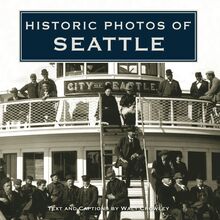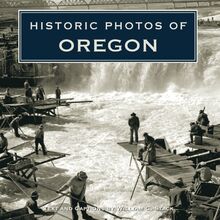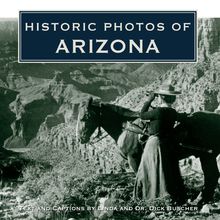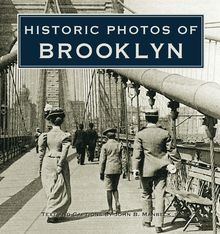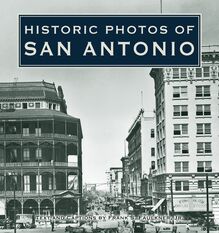Historic Photos of Chattanooga in the 50s, 60s and 70s , livre ebook
214
pages
English
Ebooks
2010
Vous pourrez modifier la taille du texte de cet ouvrage
Obtenez un accès à la bibliothèque pour le consulter en ligne En savoir plus
Découvre YouScribe et accède à tout notre catalogue !
Découvre YouScribe et accède à tout notre catalogue !
214
pages
English
Ebooks
2010
Vous pourrez modifier la taille du texte de cet ouvrage
Obtenez un accès à la bibliothèque pour le consulter en ligne En savoir plus
Publié par
Date de parution
28 septembre 2010
Nombre de lectures
3
EAN13
9781618583864
Langue
English
Poids de l'ouvrage
27 Mo
Publié par
Date de parution
28 septembre 2010
EAN13
9781618583864
Langue
English
Poids de l'ouvrage
27 Mo
HISTORIC PHOTOS OF
CHATTANOOGA
IN THE 50 S , 60 S , AND 70 S
T EXT AND C APTIONS BY W ILLIAM F. H ULL
Chattanooga is blessed with some spectacular panoramas, and one of the most stunning is the view from Point Park on Lookout Mountain. Forming a small part of the Chickamauga and Chattanooga National Military Park, this park land occupies the most northern point of the mountain as it protrudes across the state line into Tennessee. Below these gazing tourists in 1953 lies the Tennessee River where it makes a huge turn at what is known as Moccasin Bend.
HISTORIC PHOTOS OF
CHATTANOOGA
IN THE 50 S , 60 S , AND 70 S
Turner Publishing Company
200 4th Avenue North Suite 950
Nashville, Tennessee 37219
(615) 255-2665
www.turnerpublishing.com
Historic Photos of Chattanooga in the 50s, 60s, and 70s
Copyright 2010 Turner Publishing Company
All rights reserved.
This book or any part thereof may not be reproduced or transmitted in any form or by any means, electronic or mechanical, including photocopying, recording, or by any information storage and retrieval system, without permission in writing from the publisher.
Library of Congress Control Number: 2010926752
ISBN: 978-1-59652-743-0
Printed in China
10 11 12 13 14 15 16-0 9 8 7 6 5 4 3 2 1
C ONTENTS
A CKNOWLEDGMENTS
P REFACE
R ECASTING THE C ITY (1950-1959)
C HALLENGES AND A C HOO C HOO (1960-1969)
N EW V ISIONS OF O LD (1970-1979)
N OTES ON THE P HOTOGRAPHS
This view faces north on Market Street from Eleventh Street in 1955. Directly in front to the right is the bow-front Plaza Hotel, today the site of the long-running eatery, the Pickle Barrel; Georgia Avenue is to its right. To the far left is an advertisement for a drink called Royal Crown Cola-commonly known as RC Cola. The soft drink is frequently paired with Moon Pies, a Chattanooga institution.
A CKNOWLEDGMENTS
This volume, Historic Photos of Chattanooga in the 50s, 60s, and 70s , is the result of the cooperation and efforts of many individuals and organizations. It is with great thanks that we acknowledge the valuable contribution of the following for their generous support:
Chattanooga-Hamilton County Bicentennial Library
Cox Family Collection
Tennessee State Library and Archives
We would also like to thank the capable and professional staff in the Local History Department at the Chattanooga-Hamilton County Public Library.
-------
With the exception of touching up imperfections that have accrued with the passage of time and cropping where necessary, no changes to the images have been made.
P REFACE
In the years after the Second World War, Chattanoogans resumed a life not unlike the one that had predominated in the 1930s. Many men returned to jobs in industry, women became homemakers, and children were expected to finish basic schooling and attend church. In the city, heavy industry abounded, foundries were busy, and small shops were filling orders in the great economic surge that America was undergoing. Outside town and around the valley, small farming was still a way of life. It would be fair to say that most Chattanoogans had country roots. But new opportunities were on the horizon. The Tennessee Valley Authority was well funded through tax dollars and expanding its work on the river system. A huge new Dupont plant opened near the Chickamauga Dam in 1948, employing 900 local folks around the clock to produce nylon, which would cover everything from upholstery to human beings. The dream of a house and a new car was now within reach of many Chattanoogans. The new prosperity touched a generation that had not known middle-class comforts, while the poverty that pervaded this southern Appalachian region still left a large number of families barely scraping by.
In Chattanooga, P. R. Olgiati was elected mayor, taking advantage of a new state law which made annexation of the suburbs almost a fait accompli. Some enclaves such as East Ridge and Red Bank incorporated as towns to keep the city at bay, but around them the city limits expanded. Sections of town were removed by way of eminent domain to make way for the modern interstate system being laid across the nation like the railroads of a century before. A downtown landmark, Cameron Hill, would literally lose its top so that its soil could be used as fill dirt for the new highway.
A small art museum fashioned out of the old George Hunter home on the river bluff downtown opened in the 1950s. Concentrating on American art, its collection would grow in depth and its name in respect. A collector with a keen eye for glassware, Anna Safley Houston, left a treasure trove of antiques to the city of Chattanooga itself, which found a home within walking distance of the Hunter Museum for this unique assemblage of Americana. On radio, the voice of Luther Masingill came over the air, a voice of trust for the river city since 1941, bringing news and conversation and reuniting lost dogs with thankful owners. In 2010, Masingill was still broadcasting after 70 years in the business.
As the decade wore on, racial troubles were brewing across the South and in southeast Tennessee. The Atlanta civil rights worker Ralph Abernathy visited the city in the spring of 1956, proclaiming that it s great to be arrested to loud applause from his black audience. By 1960, sit-ins in downtown restaurants had become a means to an end. The confrontations were tense, but relatively brief. Ultimately, the conflict in Chattanooga was peacefully resolved, resulting in a push to desegregate local schools and public places citywide.
If Chattanoogans were able to negotiate a racial solution of sorts, the town appeared unable to undo the work of a century of smokestack emissions. An infamous award given in 1969 by the U.S. Health, Education, and Welfare Department branded the Scenic City as America s most polluted town. Profligate polluting by local industry had left a mark on the land and the water and had fouled the air to the point where it plainly stank. Stories of businessmen coming home at noon to change into a clean shirt for an afternoon s work were common. Nevertheless, the city would redeem itself in only three years by enforcing new industrial measures of air quality for the region and sowing the seeds of stewardship that would transform Chattanooga as the century closed.
The nation s economy was changing as well. Symbolic of changes in transportation, after passenger train service ended in 1971, the historic railroad Union Depot near the Read House was razed. Chattanoogans were traveling by automobile and leaving the city for the suburbs. Cheap foreign labor began producing everything from socks to steel. Production orders slowed down and jobs began to disappear. Downtown suffered accordingly as store vacancies became all too common. But by the late 1970s, efforts were under way to turn things around. Terminal Station had been revitalized to become the Chattanooga Choo Choo. Citizens rallied to preserve an old downtown bridge and convert it to a public commons, bringing people together over the river. The natural beauty of the land was seen as something worth preserving, promoting, and guarding; plans for walkways and green areas became an emphatic part of city planning. Conversations about a walkable, livable city were small, but earnest. In the next decade, these dreams would begin to bloom and bear fruit, demonstrating the power of a place to discover renewal and change its destiny.
- William F. Hull
Here around 1955, it s hard to know whether these young women are fascinated with a rock formation or gazing in apprehension at a creature from a science fiction movie. At any rate, the group is descending into the depths of Tennessee s most famous cave, Ruby Falls. An enduring attraction on Lookout Mountain and a landmark for traveling Americans, the cave was discovered in 1928 by Leo Lambert, who named it for his wife, Ruby. See Ruby Falls would eventually beckon to motorists across the state from barn roofs everywhere.
R ECASTING THE C ITY
(1950-1959)
For citizens making a new life after the rigors of the Great Depression and World War II, the 1950s brought expanded opportunities. Dupont located a large facility near the Chickamauga Dam off Hixson Pike to produce that truly modern synthetic wonder, nylon. The Tennessee Valley Authority, which had placed permanent offices in the city in the thirties, continued to grow steadily from the increasing power generation required by a rising middle class. Factories like the Wheland Foundry were busy across the city, as were the mills around town that supported the textile industry that was taking larger shape to the south in Dalton, Georgia.
George Thomas Hunter, an heir to the Chattanooga Coca-Cola Bottling fortune, passed away in 1952. In his will he bequeathed the Faxon Mansion on the city s river bluff to house an art collection that would enrich the cultural life of the city for years to come. Another humanitarian effort, the Siskin Memorial Foundation, began at this time boasting a mission of innovative treatment for those who had suffered debilitating injuries regardless of their ability to pay.
Chattanooga elected a new mayor, P. R. Olgiati, a man who had a vision for the city. He would work to have a new federal interstate completed, I-24, connecting Chattanooga to Atlanta and Nashville. His administration would also oversee massive redevelopment of the west side of town under the guise of urban renewal, forcing 1,400 families to move and creating a Golden Gateway of retail development. Suburbs like Brainerd were whisked into the city through rapid annexation.
Other highlights helped define the decade. Many citizens were galvanized by the youthful fire of the evangelist Billy Graham in a series of local, memorable crusades in 1953. Television came to town when WDEF signed on the air in 1954. Chattanooga congressman Estes Kefauver became a nationally known Tennessee senator and a vice-presidential c



